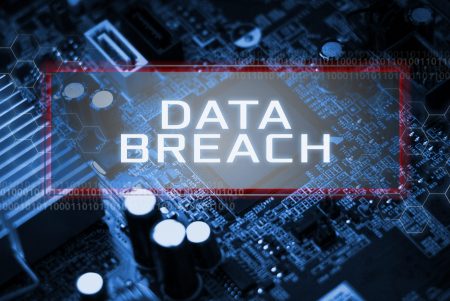- News & Resources: Listings >
- Blog
- How OCWA modernized water infrastructure with Cisco industrial IoT
- Redefining physical security in healthcare: A response to rising violence
- Emerging Cyber Threats in 2025: Tactics Redefining Digital Risk
- The Three Shields: How Firewalls Defend Modern Enterprises
- Workplace Safety in Crisis: Protecting Frontline Workers from Rising Threats
- The Role of Industrial Networking in Modern Manufacturing
- Why Cybersecurity for SMBs Must Be a Top Priority in 2025
- Together We Give: CMN and Umbrella’s Commitment to Support our Community
- The State of Shoplifting report reveals that 24% of shoppers switch stores due to shoplifting.
- How to Improve Safety and Security in Schools – Cloud Manage Network
- Top 10 Cybersecurity Threats in 2024
- Microsegmentation: Protecting Data from Cyber Threats
- Retail shoplifting and loss prevention: How to protect your business
- Generative AI Cost Optimization Strategies
- Why Do I Need to Protect My Cloud?
- 10 Reasons for Engaging Outside Experts to Manage Your Cybersecurity
- Why Hiring a 3rd Party MSP Expert Makes Sense and – and Cents (MANY cents!)
- Brand and Network Considerations When Adopting AI Corporately
- Integrating XDR, SIEM, and SOAR
- 3-2-1 –Go? Not so quick, this time.
- 5 Things a CISO Shoud Know
- 10-Step Patch Management Checklist
- Penetration Testing vs. Breach Attack Simulation
- Current big cyber breaches and impact on businesses
- Smart Infrastructure Gets Lit Up!
- Securing Industrial IoT: The Missing Puzzle Piece
- 7 Common Cybersecurity Mistakes Made by SMBs
- The Future of Physical Security: Cloud-Based Systems
- Autonomous and Sensor Technology Use Surging
- 2024 Facilities Trends Will Require Facilities and IT Teams to Work in Tandem
- NGFW vs. WAF. What’s the Right Firewall for You?
- Chris Hadfield’s Words To Live By
- Industrial Revolution 4.0 + IIoT
- Digital Fluency Drives Innovation
- Your Cloud Needs Protecting, Too
- Your building alarm systems could become obsolete. In 2024!
- Zero Trust 2.0: Zero Trust Data Resilience (ZTDR)
- We just got, or got used to, Wi-Fi 6. What is Wi-Fi 7?
- What Does the Board Need to Know? Business Metrics that CISOs Should Share – 4th and Last in a Four-Part Series
- Why 2024 is the Year for AI Networking
- International Women’s Day is Tomorrow – Great Time to Think About…
- Data-Centric Security Step One: Classifying Your Data
- The Network – Unsung Hero of Super Bowl LVIII
- What Does the Board Need to Know? Business Metrics that CISOs Should Share – Third in a Four-Part Series
- Boosting IT Team Performance by Fostering Intuition, Curiosity and Creativity
- Breach Remediation Costs Can Wipeout Bottom Line and Business
- Hoodied Hackers Now Favour Hugo Boss
- What Do You Need to Tell the Board? Business Metrics that CISOs Should Share – Second in a Four-Part Series
- How to Get People to Re-Engage After the Holidays
- What Does the Board Need to Know? Business Metrics that CISOs Should Share – First in a Four-Part Series
- Android Devices MUST be Updated + IT Departments Being Cut as Privilege Escalation Escalates
- Today’s Common Cloud Migration and Management Concerns
- Protect Your Healthcare Network from Cyberattack – Lives are at Stake
- Happy Halloween: Black Cats Lead to Boo….Hoo.
- Insurance Underwriters are Protecting Their Flanks
- Insurance Companies Cracking Down as Cybercriminals Become Better Business Builders
- Scary Cyberattacks Stats
- Parents, Profs and IT Professionals Perceive Back-to-School Through Different Lens
- Zscaler’s new IDTR and other tools that leverage generative AI
- Vanquish Vaping, Vandalism and Villainy
- Fabric for Fast-Paced Environments
- Changes to Cyber Insurance Requirements – What you Need to Know
- Cybersecurity Readiness – Newly Released Report
- Passwords Leaked…Again
- 10-Step Patch Management Checklist
- Remote – Again – For Now… and Still Maintaining Engagement
- Protecting Pocketbooks, Passwords and Property from Pilfering
- Raspberry Robin: Highly Evasive Worm Spreads over External Disks
- Cisco Introduces Responsible AI – Enhancing Technology, Transparency and Customer Trust
- Managing Customer Trust in Uncertain Supply Chain Conditions
- Hope on the Horizon
- Toys of Tomorrow… What will spark your imagination? Fuel your imagination?
- Protecting Purses and Digital Wallets
- The Password that Felled the Kingdom + MFA vs 2FA
- The MOE’s RA 3.0 and Zscaler
- 7 Critical Reasons for MS Office 365 Backup
- Penetration Testing Important, but…
- Social Engineering and Poor Patching Responsible for Over 90% of Cybersecurity Problems
- Breach Incidence and Costs On the Rise Again + 5 Ways to Reduce Your Risk
- Cybersecurity Insurance Policies Require Security Audits and Pen Testing
- Wireless strategies for business continuity gain importance as enterprise expand IoT, cloud, and other technologies
- How Cybercrooks are Targeting YOU
- Enabling Digital Transformation with Cisco SD-WAN
- WFH Post Pandemic – What It Will Look Like. What You’ll Need.
- Leaders to looking to the IoT to improve efficiency and resiliency
- Cyber Security Vernacular – Well, some of it, for now
- Why You Need Disaster Recovery, NOT Just Back-Ups
- 10 Reasons Why Having an Expert Manage Your Cybersecurity Makes Sense and Saves Dollars
- Converting CapEx IT Investments into Manageable OpEx
- The Hybrid Workplace – Planning the Next Phase
- Cisco Cloud Calling: Empowering Customers to Thrive with Hybrid Work
- When You Can’t Access the Cloud
- How to Keep On Keeping On
- New Cisco Research Reveals Collaboration, Cloud and Security are IT’s Top Challenges
- Threats from Within on the Rise
- Cloud Covered? If Not, Take Cover!
- Zero Trust and Forrester Wave Report
- Password Based Cyber Attack: Like Leaving Keys Under Doormats
- So, What’s Up With Sensors?
- Sensors and Systems Create a Digital “Last Mile” and Help Skyrocketing Costs
- Scanners Provide Peace of Mind for Returning Students and Workers
- Sensors Improve Operations and Bottom Line… Easily and Cost-Affordably.
- Cisco Meraki Looks at 2021
- 2020 Holiday Shopping: Cybersecurity and Other Tips to Safeguard Wallets and Systems
- How to make the most of the technology you have
- Personnel, Planet and Business Progress: More Interdependent Than Ever Before
- Sure… you can get them all in the boat – but can you get them to work well together?
- Pushing the Zero Trust Envelope – Cisco is Named a Leader in the 2020 Forrester Zero Trust Wave
- Cloud Data Must be Protected, Too!
- Don’t Let Anyone Get the Dirt on You – Make It Instead!
- How IoT Devices Can Help You and Your business
- WebEx – A World of Possibility
- Creating Your Breach Response Plan Now Will Save You Thousands Down The Road
- Been hacked? Here’s what you must do next.
- The Need for Pen Testing is At an All-Time High
- 5 Ways an IT Reseller Improves Your Performance and Peace-of-Mind
- 5G and Wi-Fi 6: Faster, more flexible, and future ready. Are you?
- Network and Data Security for Returning and Remote Workers + Disaster Recovery Symposium
- Collaboration and Cisco WebEx: Protecting Your Data
- Thursday’s Virtual Conference Tackles Today’s Supply Chain Trials and Tribulations
- 10 Tips to Reduce Cloud Storage Risk
- COVID-19 Crisis Fuelling IT Spending
- Supply Chain/Logistics Experts Share Their Expertise
- Cisco Breach Defence Overview
- Announcing Our New Website and Blog

You’ve installed a state-of-the-art security in your home, yet keep a key under the front mat and a Post-it in the planter with the alarm code. Yet you wonder how the crooks got in.
You’re probably thinking, “As if anyone would do something like that!” The door code in the plant pot may be a little over the top, but the hidden key is more common than you would think. According to Brinks Canada, 33% of burglars come in through the front door – using keys they actually found under the welcome mat, in one of the plant pots or hidden in something else within sight.
About now, you’re either shaking your head in wonderment, or trying to figure out a new hiding spot for your key. Hint: Give it to a neighbour!
Either way, this is analogous to hackers getting into the corporate network because they got a password and gained access to the back door.
Password Attacks
Password attacks, most of which come in the form of a brute force attack or through phishing emails, are the most common causes of data breaches. According to the 2020 Verizon Data Breach Investigations Report, 81% of data breaches are a result of compromised credentials. It is estimated that +100 billion credentials were stolen in 2020.
The World Economic Forum confirms this by saying that four out of five global data breaches are caused by weak or stolen passwords.
The really scary statistic: 30% of these breaches were the result of insider attacks. In +50% of cases, internal breaches were made possible because people wrote down their passwords some are on their workstation (15%), employees shared credentials with a co-worker, or the firm used a password management system that could be easily de-coded (giving everyone a different plant, city or dog breed name each month is very simple to crack). This is akin to leaving a key end of the doormat.
Equally scary: 70% of insider attacks go unreported. You may have everything covered within your own organisation, or at least believe you do, but if your organization relies on third party services, it’s possible that you may never learn that your employees’ confidential information was stolen.
Bad actors are highly sophisticated and well versed in password engineering. If your people use the same password, or similar structure, across multiple accounts – and all studies suggest that most people do – a breach in an outside firm has the potential to put your company at risk. If an attacker can dump a password database, then all the passwords become useless.
You may be wondering why giving employees a new word and number combination each month is no longer effective. After all, was an accepted practice for many years. Dictionary attacks rendered this approach useless. This is a type of brute force attack which relies on people’s habits of choosing “regular” words as part of a password. Hackers have collated “cracking dictionaries”. When combined with typical spear phishing procedures which allow words personally important to individual employees to be included, passwords can be quickly cracked.
Even when companies increase their password policies and requiring longer pass first with the use of diversified characters, employees can still use the same username and password across multiple accounts, potentially leaving your network vulnerable.
What can you do to help combat this? Have your employees use an access management tool, with multifactor authentication and lock accounts after too many password failures. Banks typically lock users out after three failed attempts; five is considered the maximum for this approach to be effective.
Credential Stuffing
According to law enforcement agencies, over 25% of homeowners whose burglars entered with a key found outdoors, experience a second theft within two years – again with the crook coming in the front door. Why? These homeowners thought the problem was that their hiding place had not been secure enough, not that hiding keys was the problem in the first place.
Why mention this? Because that same mentality/behaviour applies to passwords.
If your company was hacked in the past, or any of your employees’ credentials were compromised by a third-party firm (e.g. Microsoft having 250 million of its records exposed in 2020, Facebook’s 533 Million users on April 3, 2021, to name a couple of highly-publicized ones), it is possible your old company passwords are languishing somewhere on the dark web.
In credential stuffing, automated attack bots work on the premise that people reuse usernames and passwords across multiple services, and/or that some account owners never changed their passwords after a breach.
Today, the vast majority of companies know it’s critical for employee passwords to be changed following a breach. But… we are all human. And many of us are lazy when it comes to remembering passwords. Over 60% of employees revert back to their original password as soon as possible – or adopt when used on a different site, if that is not possible.
On a personal note, you may want to think your own password approach. If you are the company IT manager, then you’ll want to look adopting stricter password policies and protecting your network and cloud with tools such as multi-factor authentication. This is especially important when you have remote workers.
One of the multi-factor authentication tools often recommend to clients is Cisco’s Duo, but there are other security measures and tools that can be implemented. To learn more, please contact us at [email protected] or (416) 429-0796 or 1.877.238.9944 (Toll Free).

